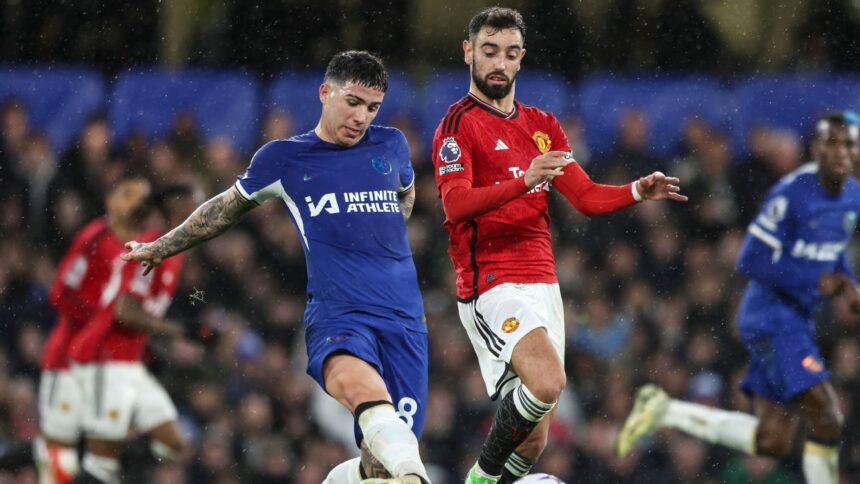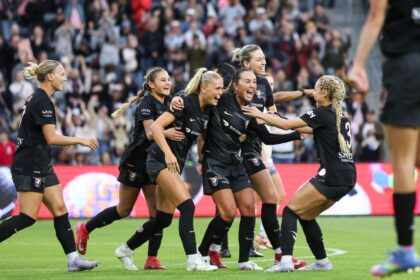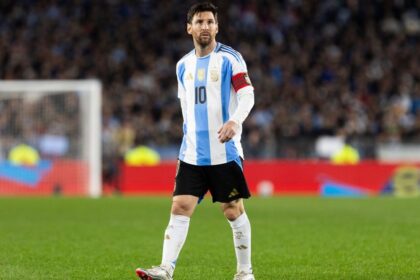The star signing of this summer transfer window could be the transfer of a goal-scoring forward from the Bundesliga to the Premier League. Will it work? Historically, not always, but sometimes yes.
According to the book “Soccernomics” by Simon Kuper and Stefan Szymanski, although team salaries are a good indicator of their success, spending on signings does not have a direct correlation with performance. It’s somewhat frustrating, considering the attention paid to the transfer market.
In the last seven years, Kylian Mbappé has been involved in two transfers: one for 180 million euros and another at no cost. However, his salary has been a more consistent indicator of his value. Players for whom large sums are paid usually have variable performance. PSG probably doesn’t regret the 70 million euros for Khvicha Kvaratskhelia, but Manchester United hopes that the signing of Leny Yoro, for 62 million euros, will perform well.
The effectiveness of millionaire signings is mixed. Ousmane Dembélé to Barcelona for 135 million euros didn’t work, but Dembélé to PSG for 50 million euros did. Neymar to PSG for 222 million euros was acceptable, but to Al Hilal for 90 million euros was a failure.The statistics are clear, but can we learn something from these millionaire transfers?
To answer this question, a database with the 200 most expensive transfers of each season over the last decade was analyzed, a total of 2,000 operations. What performance can be expected in terms of minutes played? Do players who change leagues add value?The easiest way to evaluate the success of a signing is to analyze the minutes played. If a large amount is paid for a player, he is expected to play.
Analyzing players who moved to the five major European leagues, the average age at signing was 23.6 years old, with an average cost of 23.6 million euros. They played an average of 57.3% of league minutes in their first year, 41.9% in the second, and 28.4% in the third. If a weighted average is taken, with a 50% weight for the minutes of the first year, 33% for the second, and 17% for the third, the result is approximately 47.4% of the relevant minutes. That is the benchmark.
Let’s see what we can learn from these 2,000 transfers.
If you want to succeed in the Premier League, go to Portugal
Of the players analyzed, 699 joined Premier League clubs. Their weighted average of minutes played was 47.5%, similar to the overall average. Although coming from leagues like the Dutch Eredivisie (45.8%) or the French Ligue 1 (47.0%) does not always guarantee success, players from three leagues seemed more likely to offer good performance: Spanish LaLiga (53.7%), the Premier League (53.8%) and, above all, the Portuguese Primeira Liga (57.5%).
Whether it’s a high-profile signing like Enzo Fernández from Benfica to Chelsea for 121 million euros, or the more economical moves that Wolverhampton Wanderers have made in the last decade (Raúl Jiménez from Benfica for 38 million euros, Rui Patrício from Sporting CP for 18 million euros, Willy Boly from Porto for 12 million euros), the transition from Portugal to England usually works well. Even expensive players with sometimes frustrating results, like Fernández or Darwin Núñez (Benfica to Liverpool for 85 million euros in 2022-23), have had many minutes. Something is obtained in return for the investment.
In this sense, it could be argued that Benfica or Sporting are the best-managed clubs in the world. Despite making at least one million-dollar transfer each season (João Neves to PSG for 59.9 million euros in 2024-25, Gonçalo Ramos to PSG for 65 million euros in 2023-24, Fernández to Chelsea for 121 million euros and Núñez to Liverpool for 85 million euros in 2022-23, Rúben Dias to Manchester City for 71.6 million euros in 2020-21, João Félix to Atlético de Madrid for 127.2 million euros in 2019-20), Benfica has reached the round of 16 of the Champions League in three of the last four seasons, and reached the quarter-finals in 2022 and 2023.

We are accustomed to the flow of players from Portugal to England (or Paris), and to the influence of Portuguese super-agent Jorge Mendes in certain clubs. But it’s interesting to think what would happen in the richest league in the world if the clubs that have become major talent providers made unstable moves and lost their way. What if Benfica or Sporting didn’t produce ready-to-play players for a couple of seasons? What if Porto’s unstable 2024-25 campaign set a trend?
It’s not something they’ve had to worry about for a while, but we could be seeing the impact of a situation where a “feeder club” stops nurturing clubs in the Bundesliga.
Austria’s RB Salzburg had incredible success, winning 10 consecutive league titles from 2013-14 to 2022-23, while providing a steady flow of talent primarily to German clubs. Among them: Naby Keïta (€29.8 million to RB Leipzig in 2016-17), Dayot Upamecano (€18.5 million to RB Leipzig in 2016-17), Erling Haaland (€20 million to Borussia Dortmund in 2019-20), Stefan Lainer (€12.5 million to Borussia Mönchengladbach in 2019-20), Dominik Szoboszlai (€36 million to RB Leipzig in 2020-21), Karim Adeyemi (€30 million to Borussia Dortmund in 2022-23), and Benjamin Sesko (€24 million to RB Leipzig in 2023-24). Setting aside the concerns and effects of multi-club ownership (and how many Salzburg stars made Leipzig their next place of residence), Salzburg’s success worked well for Salzburg and for the high-end teams of the German Bundesliga.However, the product has begun to decline: Salzburg fell to second place in the Austrian Bundesliga in 2023-24, and then to third in 2024-25, and, apart from Sesko, recent former Salzburg players like Noah Okafor and Strahinja Pavlovic (both of whom went to AC Milan) have also not performed at the same level. Sesko has just had a frustrating season, and Leipzig suffered their worst season since their promotion to the Bundesliga in 2016. Premier League teams (especially Wolves) hope that Benfica or Porto do not suffer similar droughts.
The gold rush for the next great Brazilian player usually doesn’t bear fruit
Although some clubs have had massive success in developing young players and then transferring them to mega-clubs (Borussia Dortmund is an example, as are the clubs mentioned in the previous section), we have also seen a kind of rodeo in recent years, with mega-clubs and others trying to bypass the youth clubs by going directly to the source.
On four different occasions since 2018, Real Madrid has acquired an 18-year-old player from the Brazilian Serie A: Vinícius Júnior from Flamengo (€45 million) in 2018-19, Rodrygo from Santos (€45 million) in 2019-20, Reinier from Flamengo (€30 million) in 2019-20, and Endrick from Palmeiras (€47.5 million) in 2024-25. Vini Jr. and Rodrygo made this strategy worthwhile; the transfer price of each would have at least doubled if these players had gone first to Benfica or a comparable club, and other players like Gabriel Jesus (Palmeiras to Manchester City for €32 million at 19 years old) and Lucas Beraldo (São Paulo to PSG for €20 million at 20 years old) have justified their transfer prices.

Of the 2,000 players in this sample, 43 moved from a Brazilian club. Their average age (20.2) was much lower than that of leagues with similar player export totals: players in the Dutch Eredivisie averaged 23.0 years old, the Belgian Jupiler Pro League 21.4, and there was very little average profitability. These players averaged only 34.0% of the minutes for their new club in the first year, then 26% in the second, and 15% in the third. Weighted average: only 28.3% of the minutes. You know in advance that these are likely to be longer-term investments, but in a short-term sport, the obstacles to success in this regard are numerous.
Note for English players: Seeing the world is good!
In “Soccernomics”, Kuper and Szymanski wrote: “Many national teams are primarily made up of players who emigrated young to play abroad. That’s true even for a country as rich as France. […] But none of that is true for British players (i.e., not just English). When FIFA TMS analyzed international transfers of different nationalities from 2011 to 2013, it found that only 26 percent of the transfers involving British players were to a club outside Great Britain. The only two countries in the world with more insular transfer histories in that period were Myanmar and Nepal.”When the world’s most lucrative league is in your backyard, moving abroad isn’t logical. English players don’t have to go elsewhere to find high-level competition. But those who try it don’t seem to regret it.
Out of the 2,000 players in this sample, there were 12 cases of a British player leaving England. It could be said that the 12 did quite well.
- Two players, Jadon Sancho and Jude Bellingham, went to Borussia Dortmund as teenagers and thrived immediately.
- Two others, Kieran Trippier and Conor Gallagher, went to Atlético de Madrid as relative veterans (Trippier was 28, Gallagher 24) and enjoyed solid success.
- Four went to Serie A: Tammy Abraham (Chelsea) and Chris Smalling (Manchester United) to AS Roma, Ruben Loftus-Cheek (Chelsea) and Fikayo Tomori (Chelsea) to AC Milan, and got as many minutes as they wanted.
- Harry Kane left Tottenham to go to Bayern Munich in search of trophies. He was successful in that regard (and, oh yes, he has scored 62 league goals in two seasons).
- Mason Greenwood left Manchester United to go to Marseille last summer, and although it was a polarizing move for non-sporting reasons, his 21 league goals made him an obvious success on the field.
- Jordan Henderson (Liverpool to Al Ettifaq) and Ivan Toney (Brentford to Al Ahli) moved to Saudi Arabia for large sums of money; Henderson quickly left for Ajax, but still generated four assists in 17 starts for Al Ettifaq, while Toney scored 23 goals in 30 games this season.
Excluding Toney and Henderson (and also Scott McTominay from Scotland, who had a fabulous first season after moving from Manchester United to Napoli), the other 10 players averaged 75.7% of the minutes played in the first year, 64.9% in the second, and 44.7% in the third. That’s a weighted average of 66.9%. A player like Kane was practically guaranteed success, but other players looking for a fresh start or more playing time found what they were looking for.
Serie A: The Retirement Home of European Football
Serie A is generally considered a league with older players on average, and a more pragmatic and tactical approach on the field. Napoli (11 starters aged 28 or older) and Inter Milan (four starters aged 31 or older in the Champions League final) faced each other for the Scudetto, which gives some accuracy to this assumption.
From this sample of 2,000 players, there are 31 cases of players moving to Serie A from Spain and 26 from England. The average age of LaLiga transfers was 25.1 years, and that of Premier League transfers was 26.3 years. Italian clubs tended to get what they were looking for from these players: an average of 66.0% of league minutes in the first year and a general weighted average of 55.5% (LaLiga transfers) and 54.5% (Premier League transfers), respectively. Both large and small moves in this direction have been successful. Cristiano Ronaldo played almost every minute for Juventus for three years after his 117 million euro transfer from Real Madrid; Juventus did not improve because of this transfer, but he put in the effort. Meanwhile, Romelu Lukaku has been successful twice by moving in this direction, first from Manchester United to Inter for 74 million euros in 2019-20, and then from Chelsea to Napoli for 30 million euros in 2024-25. In both cases, he left disappointing situations and won a Scudetto. McTominay also did this, costing Napoli 30.5 million euros last summer.Discount moves have also worked. Roma only paid €11 million to sign 29-year-old Edin Džeko from Manchester City in 2016-17, and he gave them eight solid-to-excellent seasons; more recently, discount moves like Atalanta’s acquisition of Davide Zappacosta (from Chelsea for €7 million) in 2021-22 and Napoli’s acquisition of Frank Anguissa (from Fulham for €16 million) in 2022-23 have worked wonders. Younger players like Moise Kean (Everton to Juventus) and one Mohamed Salah (Chelsea to Roma) have also proven to be worth the transfer fees.
However, not all moves work. Juventus paid 51.5 million euros for Douglas Luiz from Aston Villa last summer and got three league starts and a lot of injuries, and Atalanta is still waiting for the 29.1 million euros they paid for El Bilal Touré (from Almería in 2023-24) to pay off. But this route works more often than many others.
Where the FC 100 came from
Let’s conclude this experiment by focusing our attention in the opposite direction. Instead of analyzing which transfers are successful, let’s analyze where the successes come from. Here’s some basic data on the transfers of players from this year’s ESPN FC 100 list. Average age at the time of acquisition/debut: 22.7 years. Of the 100 players, 41 had been acquired by their current club or debuted (if they were youth players) at 21 years old. Eight were youth players, and another 13 required a transfer fee of 16 million euros or less. Others, like Bellingham, Haaland, and Neves, cost quite a bit even at such a young age.Only seven FC 100 players (Isco (Real Betis), Robert Lewandowski (Barcelona), Lionel Messi (Inter Miami CF), Matz Sels (Nottingham Forest), Cristiano Ronaldo (Al Nassr), Yann Sommer (Inter Milan) and Chris Wood (Nottingham Forest) were acquired by their current teams at age 31 or older. It’s probably no coincidence that five of those seven are all-time goalscorers (Lewandowski, Messi, Ronaldo) or goalkeepers (Selz, Sommer).
Average transfer price: 32.6 million euros. As expected, the range is immense. Homegrown players like Trent Alexander-Arnold of Liverpool, Bukayo Saka of Arsenal, Giuliano Simeone of Atlético de Madrid, Nico Williams and Unai Simón of Athletic Club, and Lamine Yamal, Pau Cubarsí, and Alejandro Balde of Barcelona cost practically nothing in terms of transfer fees. Meanwhile, 26 of the 100 players required a transfer price of 50 million euros or more, led by Declan Rice of Arsenal (116 million euros), Bellingham of Real Madrid (113 million euros), and Kane of Bayern (95 million euros).The average value of the players on the list: 30 million euros, or exactly what Arsenal paid for William Saliba and Napoli for Fabián Ruiz.
Average years with the current club: 3.9. We will base this on the moment an imported player was acquired or a homegrown player debuted. Of the 100 players, 15 played their first season for their current clubs in 2024-25, and another 25 were in their second season. With the high volume of movement from top-tier clubs, that probably sounds right, although it’s equally notable that 34 players were in their fifth season or more for their clubs. The median: three years.At the top end: Marquinhos of PSG (acquired from Roma for 31.4 million euros at age 19 in 2023-14), Atlético










